Best of Istria Cycling: Parenzana Trail
Everything you need to know before cycling the Parenzana — the iconic rail trail connecting Italy, Slovenia, and Croatia through Istria’s heart.
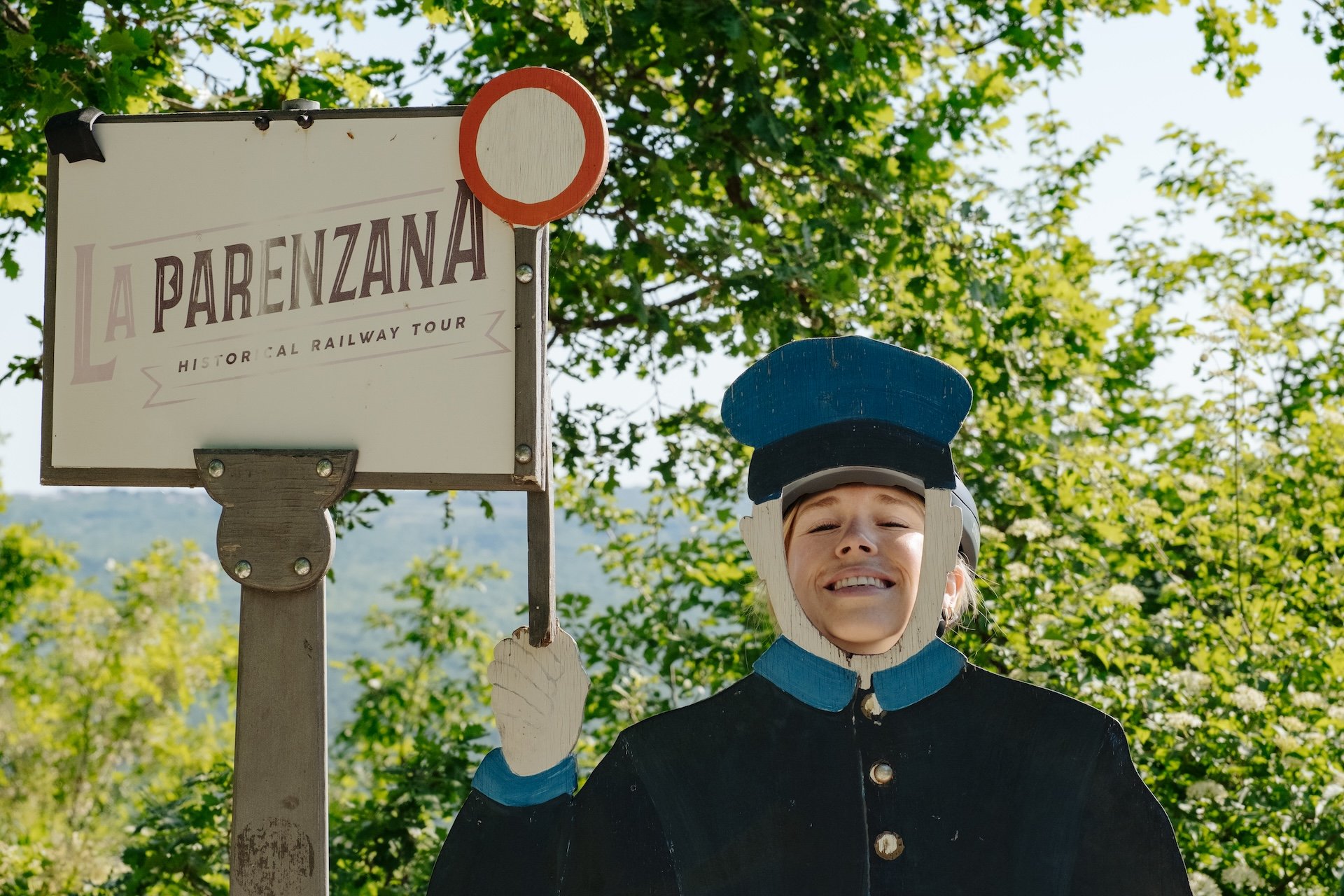
Quick Links
At the crossroads of the Adriatic and the Alps, Istria offers some of the most diverse and scenic cycling in Croatia.
If you’re looking for scenic countryroad cycling, combining it with medieval hill towns, vineyards or seaside rides, Istria cycling delivers. Big time.
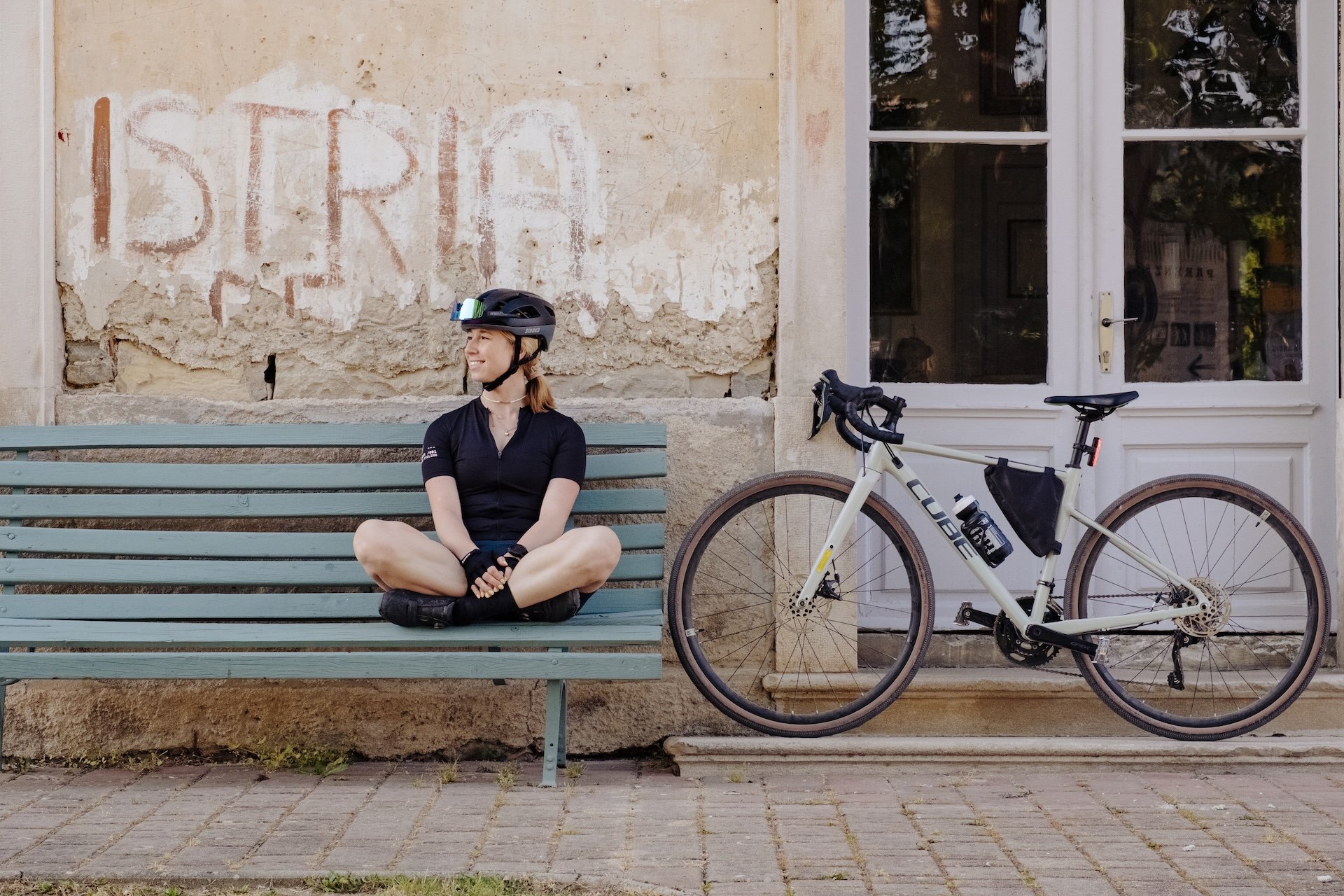
There are dozens of well-marked routes across the peninsula. But among them all, there is one that stands above the rest. A route that captures the very soul of Istria, blending heritage, landscape, and culture into a single, unforgettable journey: the legendary Parenzana bike trail.
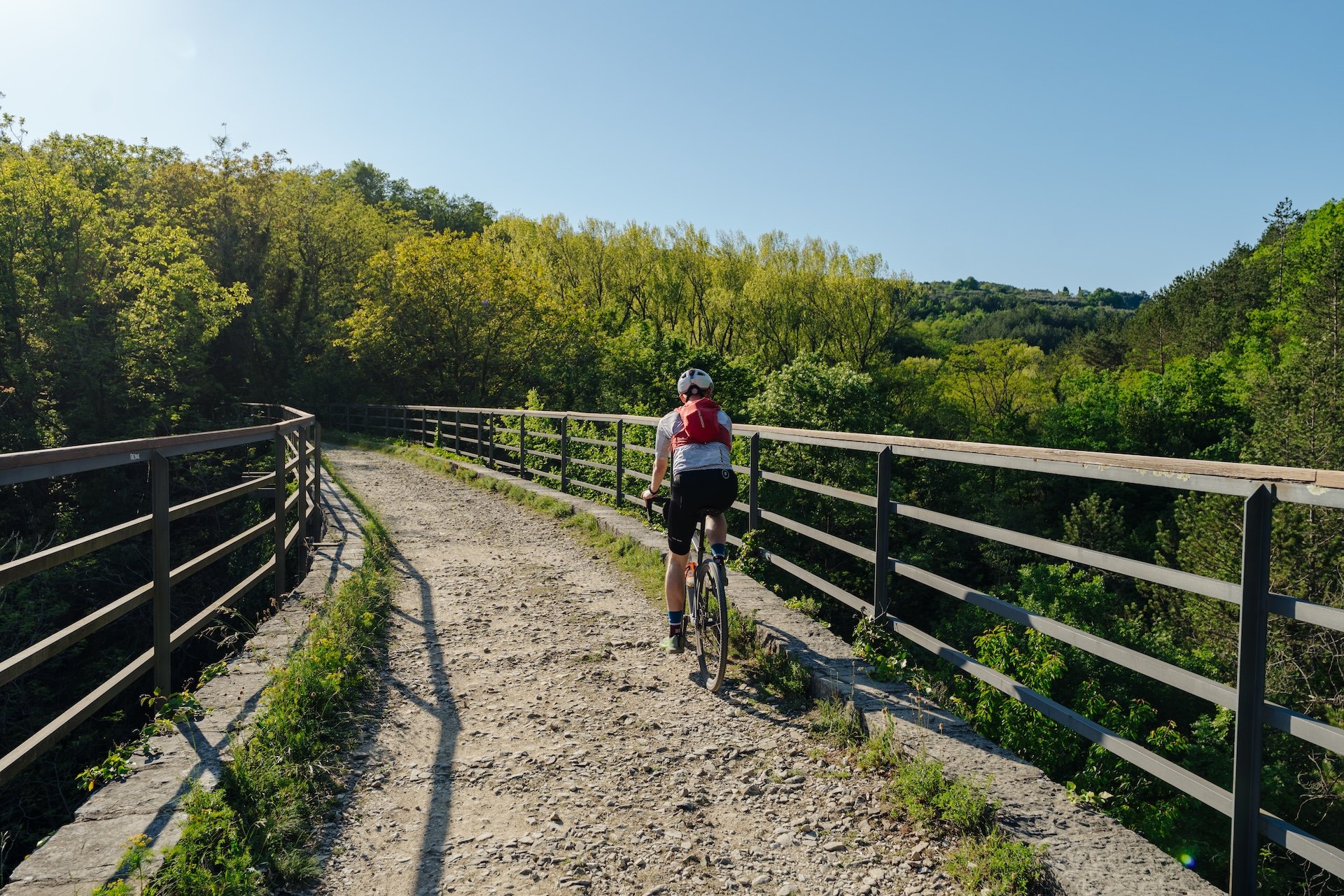
Why Ride the Parenzana
The Parenzana trail isn’t just Istria’s most famous trail—it’s a journey through three countries, centuries of history, and landscapes that never stop changing.
Once a narrow-gauge railway connecting Trieste (Italy) with Poreč (Croatia), the line carried passengers, wine, olive oil, and salt between 1902 and 1935. Today, it’s been reborn as one of Europe’s most scenic cycling trails—aptly named The Trail of Health and Friendship—linking Italy, Slovenia, and Croatia.
What You Need to Know at a Glance
- Route name: Parenzana – The Trail of Health and Friendship
- Length: approximately 123 km
- Route type: former narrow-gauge railway turned cycling trail
- Countries crossed: Italy – Slovenia – Croatia
- Start/finish: Trieste (Italy) → Poreč (Croatia)
- Surface: about 65% gravel and 35% paved
- Difficulty: moderate, with gentle gradients suitable for most cyclists
- Recommended bikes: gravel, trekking, or mountain bikes
- Traffic: mostly traffic-free, ideal for leisure and touring cyclists
- Elevation: gradual climbs and descents; total elevation gain roughly 1,600 m
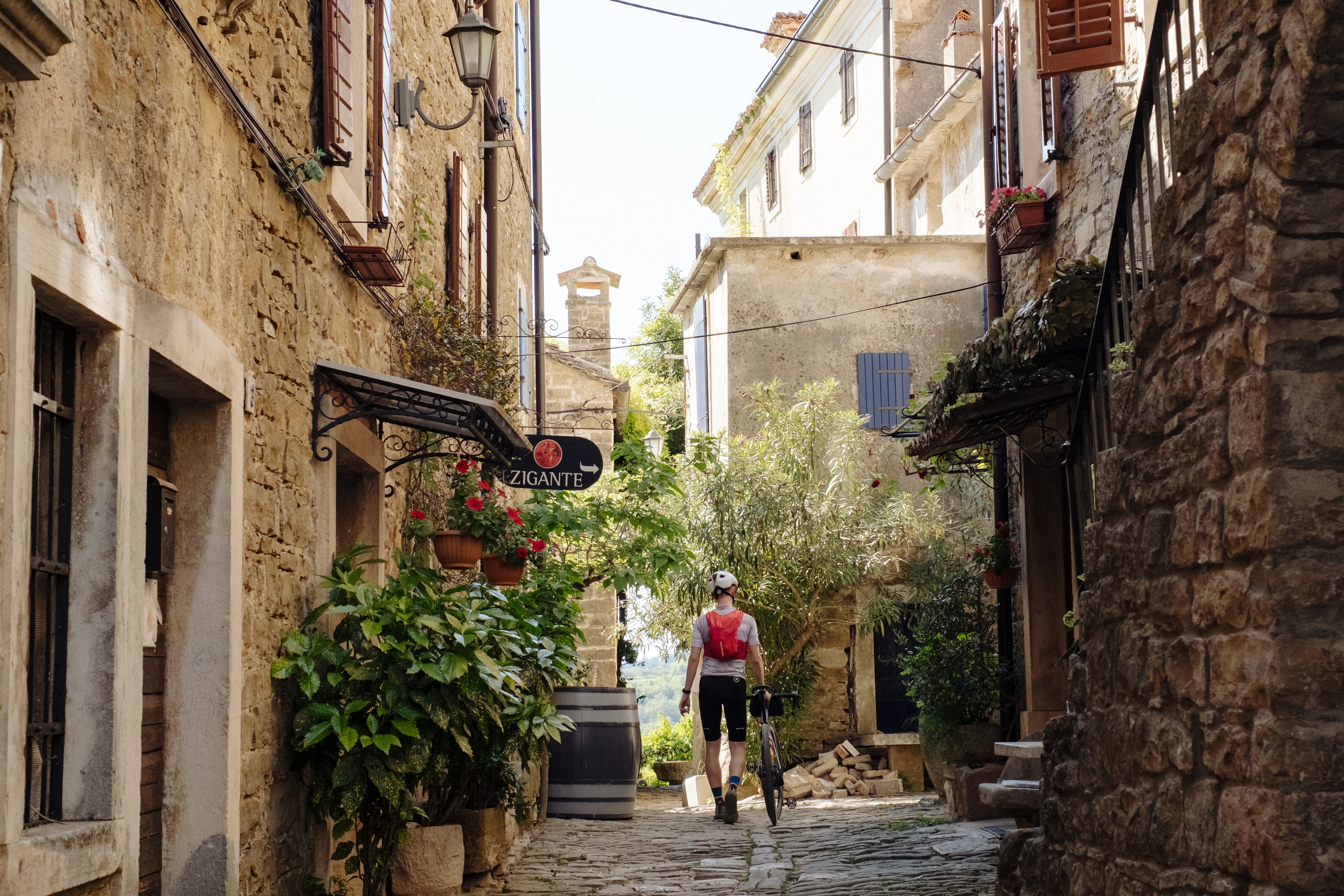
Route Overview
The Parenzana trail stretches for about 123 km from Trieste (Italy) to Poreč (Croatia), crossing three countries—Italy, Slovenia, and Croatia—along what was once a narrow-gauge railway line. Today it’s one of Europe’s most scenic and culturally rich cycling routes, combining coastal views, hilltop villages, and centuries of history in one continuous ride.
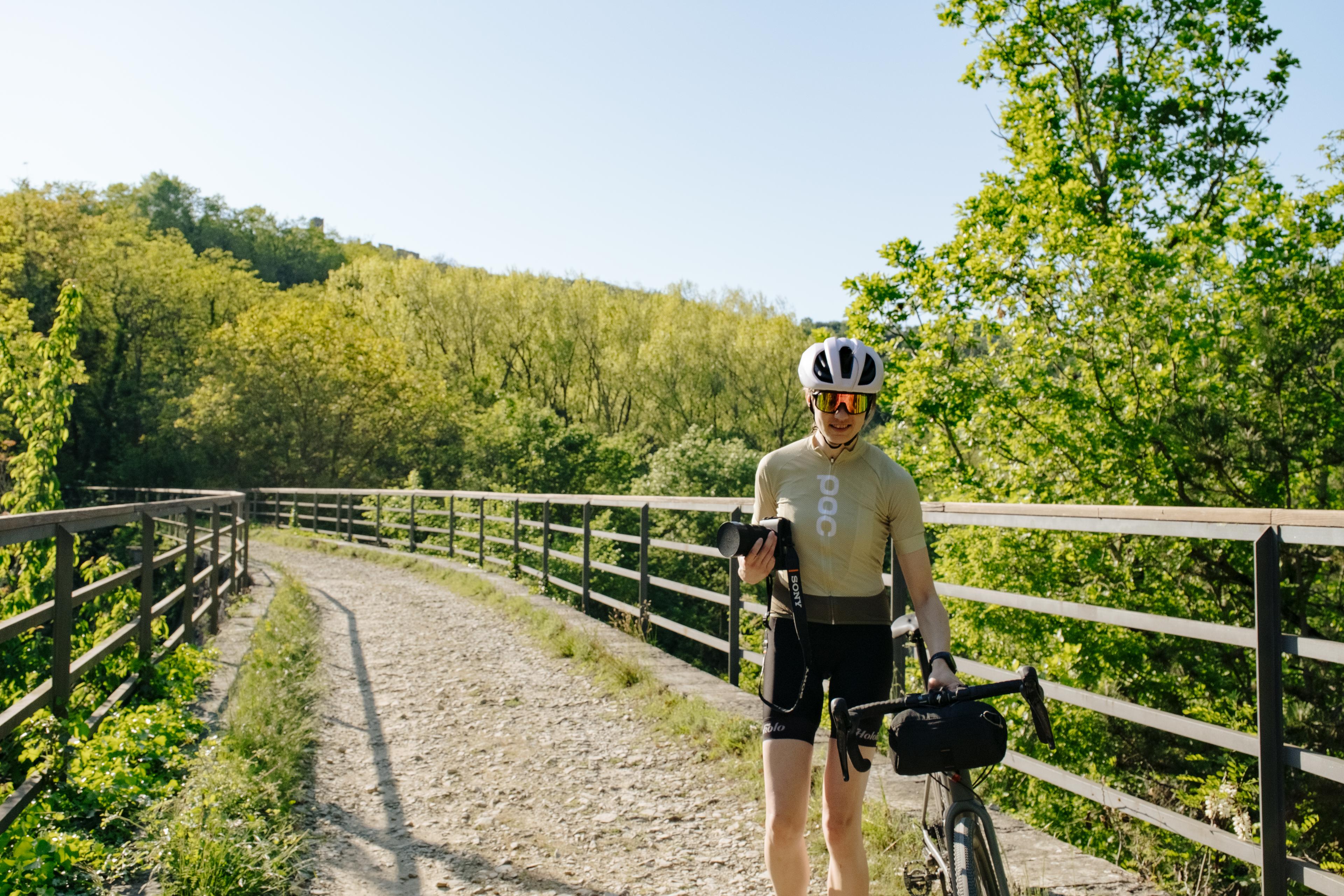
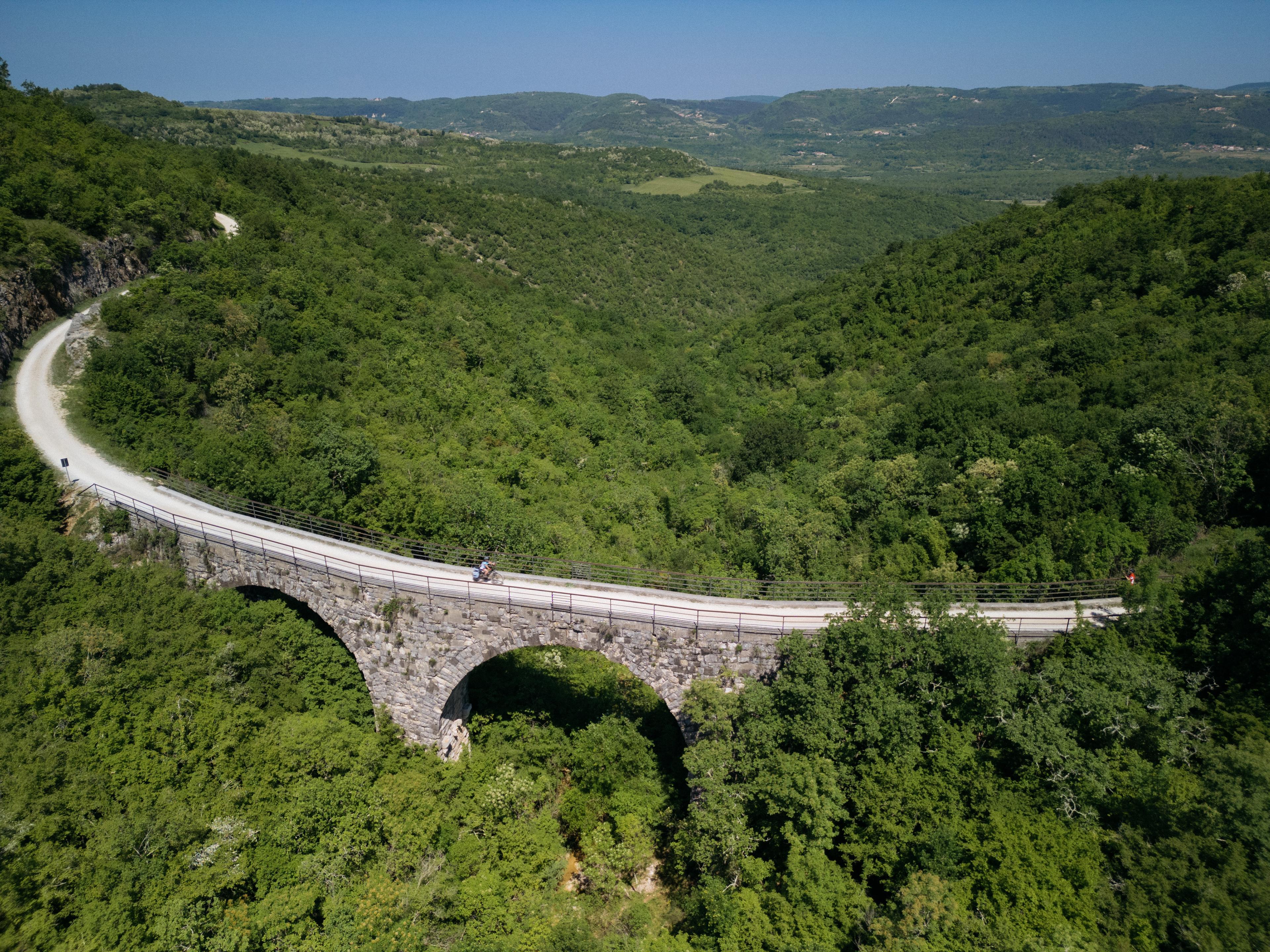
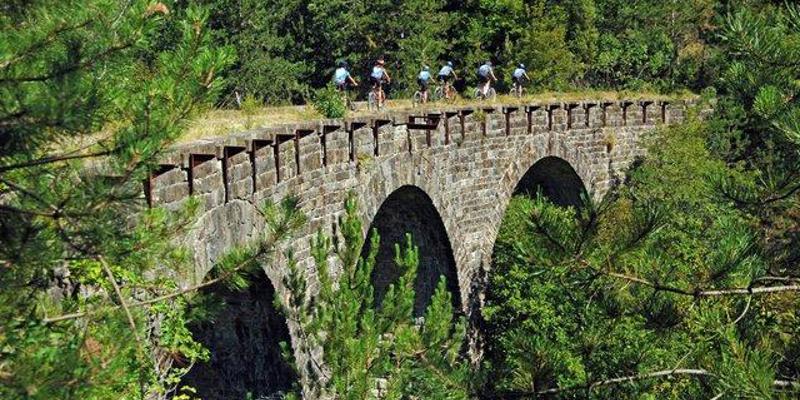
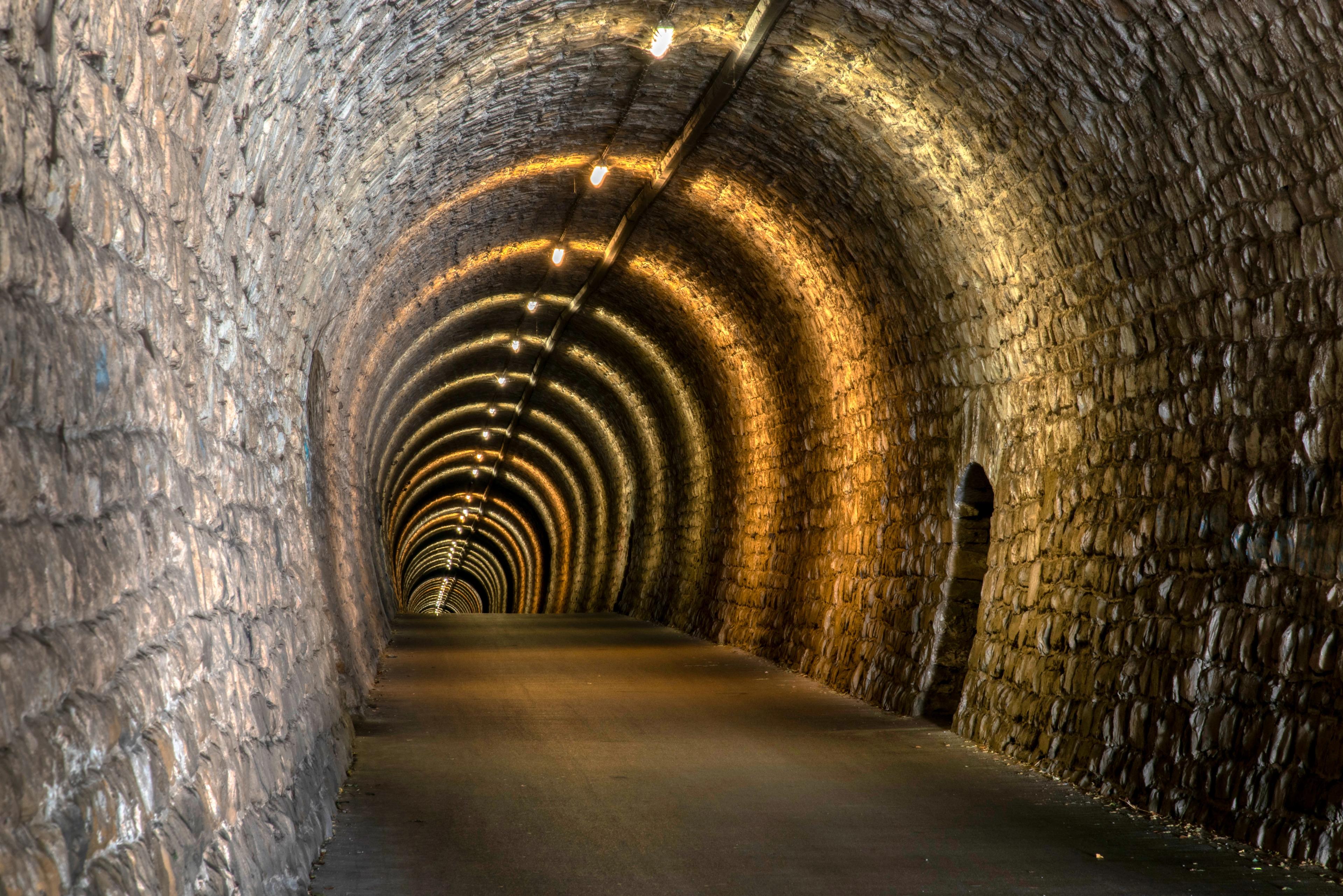
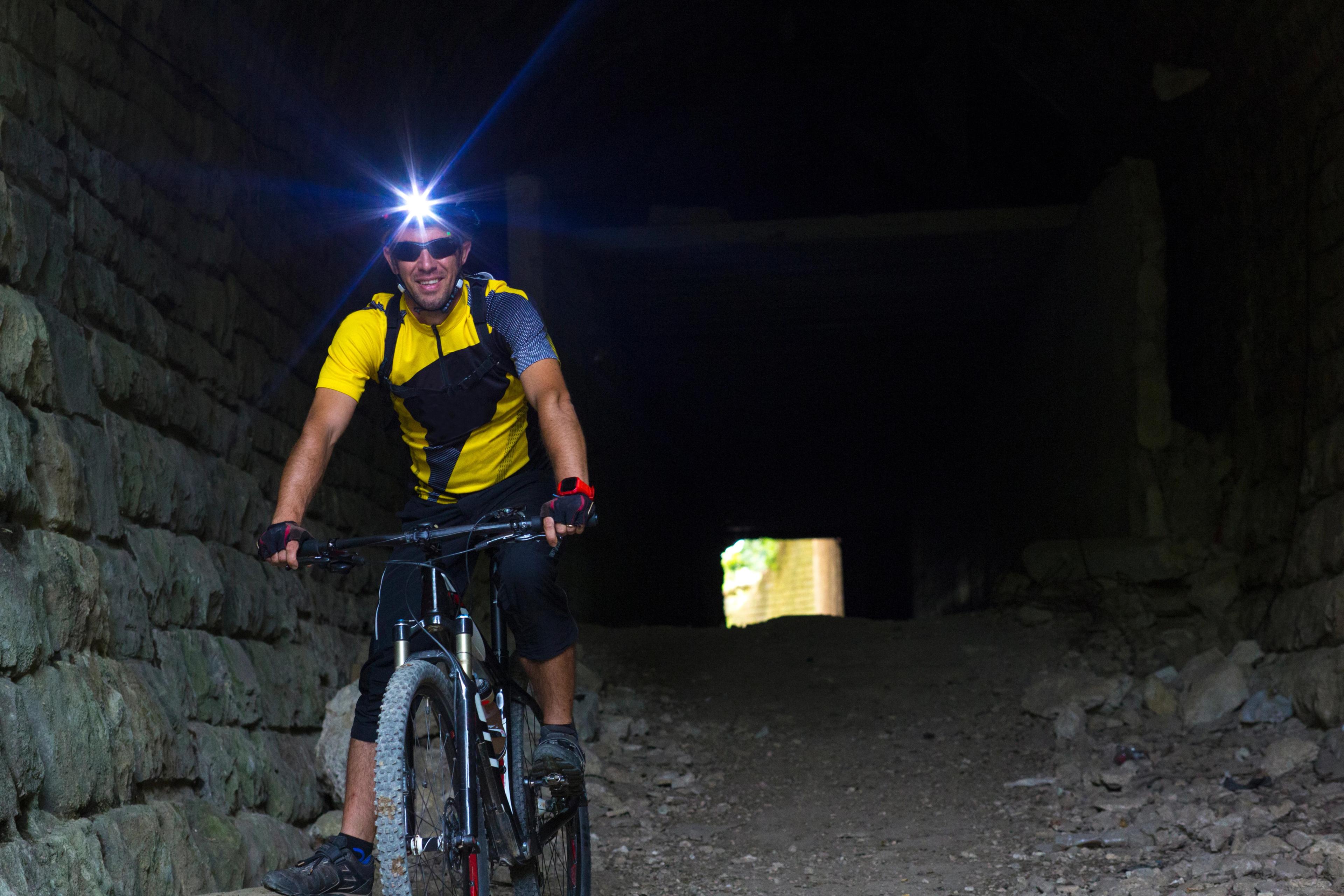
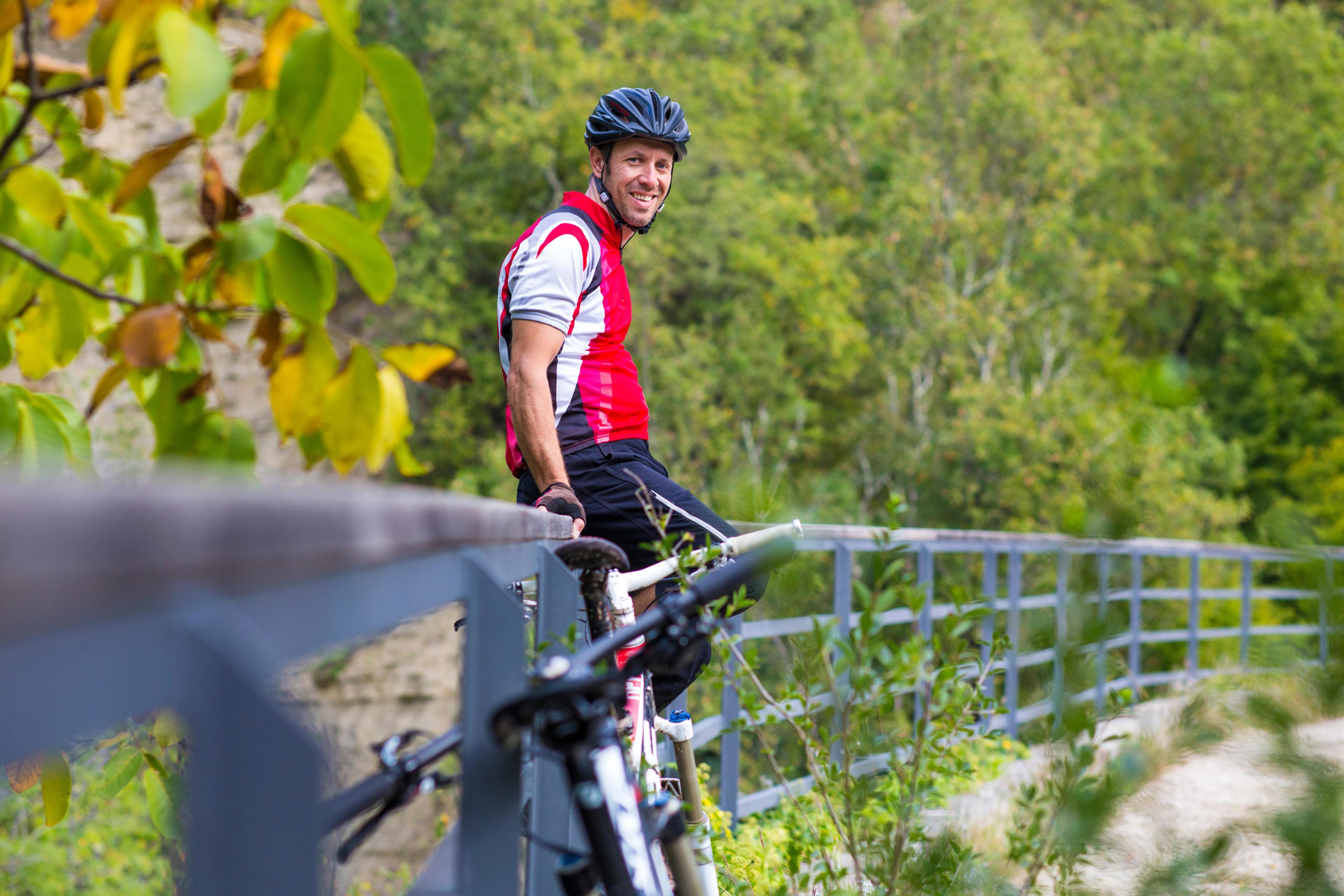
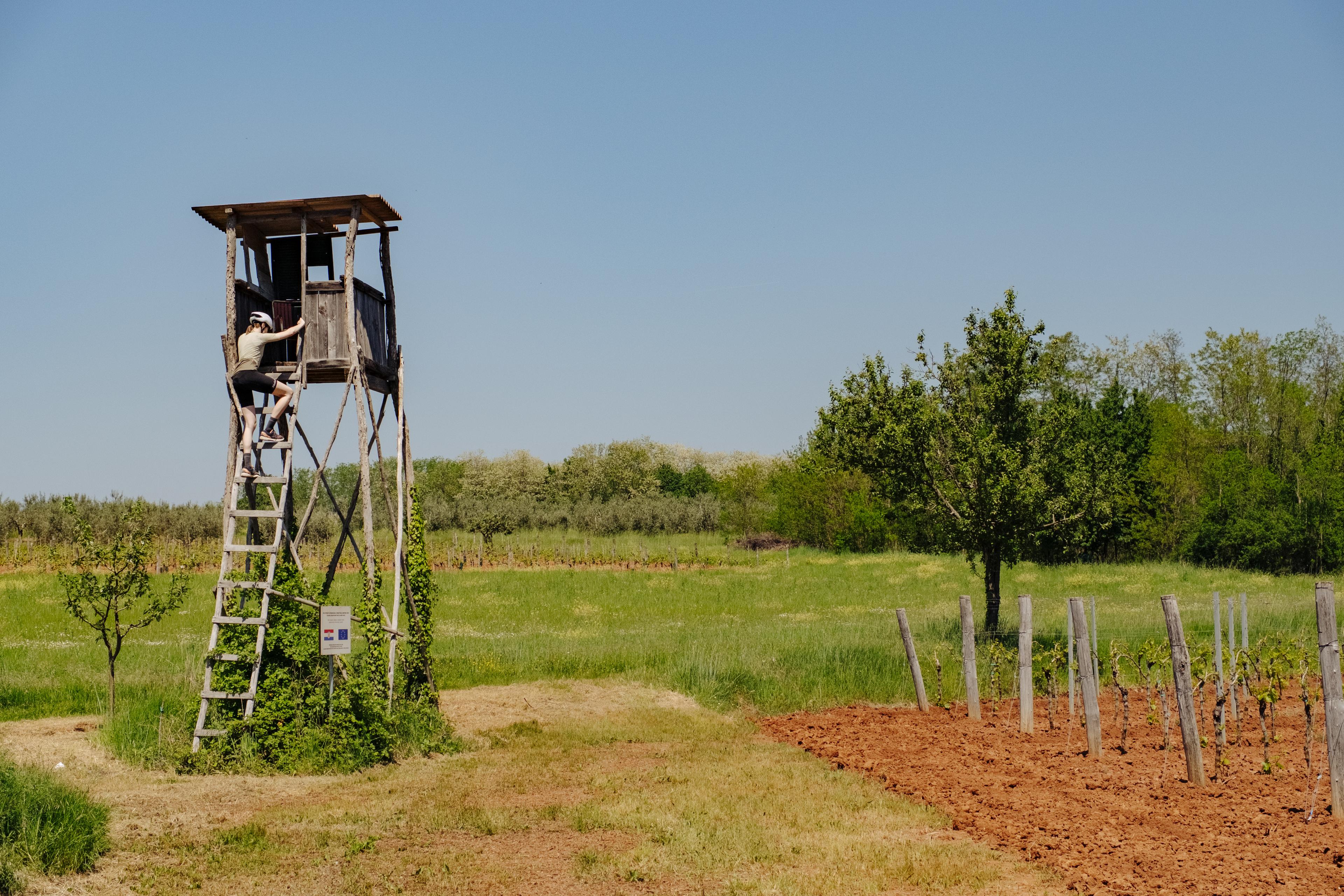



Route Map
Our favorite cycling route, featured in the map below, doesn’t stop where the old Parenzana railway did (in Poreč) — it extends the route with Istria’s must-see coastal highlights. After all, it would really be a shame to miss them!
Elevation Profile

Suggested Itinerary
Day 1: Arrival in Trieste
Day 2: Trieste – Piran
Distance: ~35 km
Surface: mostly paved cycle path
Day 3: Piran – Grožnjan
Distance: ~45 km
Surface: gravel and compact dirt
Day 4: Grožnjan – Poreč
Distance: ~45 km
Surface: gravel with short paved sections
As mentioned above, our route extends to showcase the best of Istria. If you are keen to explore more, you can continue south along the coast and through historic towns all the way to Istria’s southern tip.
Day 5: Poreč – Rovinj
Distance: ~55 km
Surface: mixed paved and gravel roads
Day 6: Rovinj – Pula
Follow the coastline south toward Pula, home to one of the best-preserved Roman amphitheatres in the world.
Distance: ~45 km
Surface: mostly paved with short gravel stretches
Day 7: Pula – Premantura
Distance: ~20 km
Surface: paved road to the park entrance, gravel inside the reserve
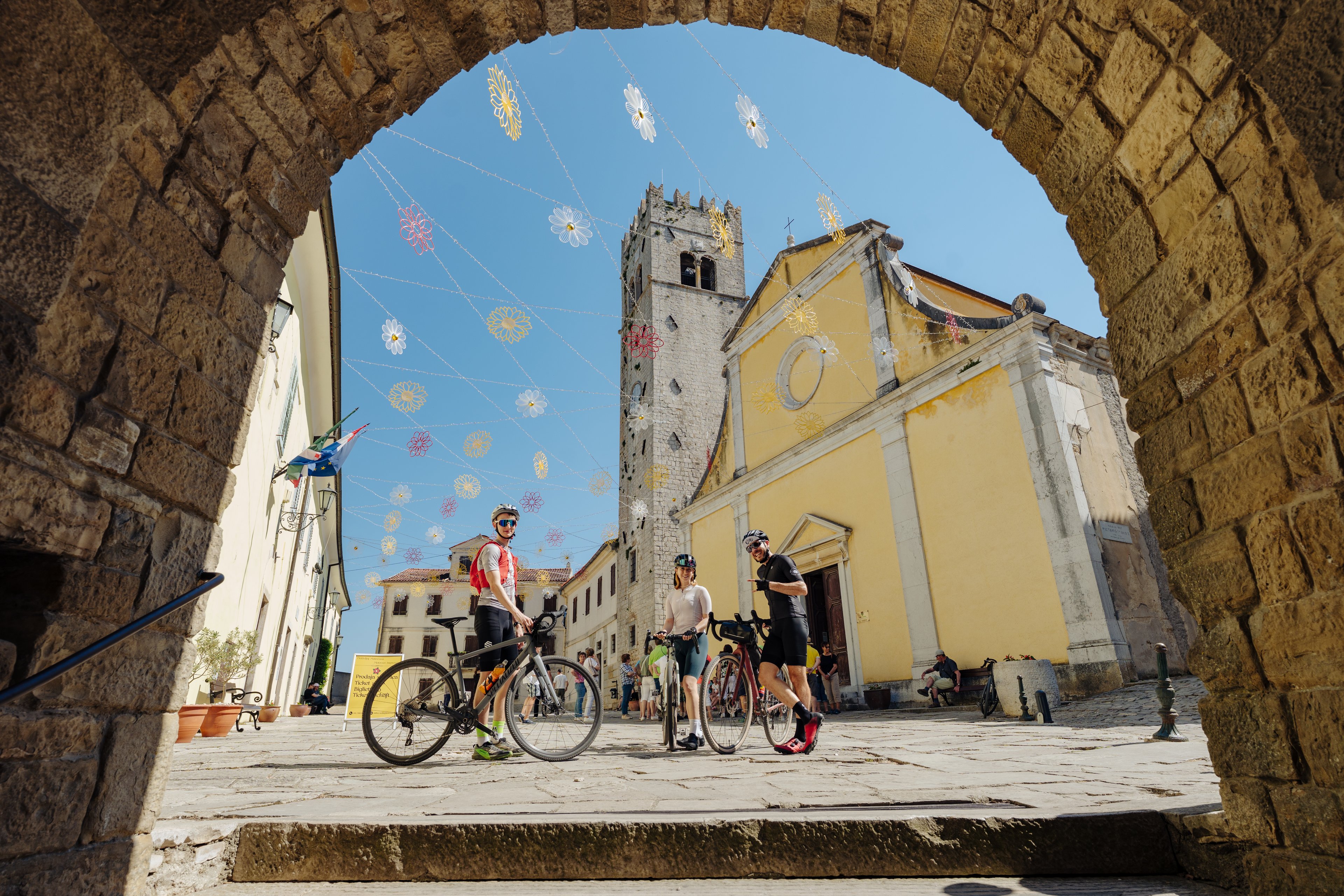
Is it simple to plan your own cycling tour?
Planning the entire Parenzana bike route on your own might sound simple—but it can quickly become a challenge.
Finding the right bike-friendly hotels, reliable luggage transfers, or accurate GPS trails can take hours of research. Some sections are poorly signposted, others mix gravel and paved roads, and a few tunnels still lack lighting. Add crossings and transport logistics, and what should be a relaxing cycling holiday can easily turn into a puzzle.
That’s why we created our the Best of Istria Bike Tour—a fully organized trip that lets you enjoy the ride without the stress of planning. You'll get:
- expertly curated GPS routes,
- pre-booked accommodations,
- travel plan & full support,
- and all the highlights of Istria packed into one seamless journey.
When to Go
Thanks to its mild Mediterranean climate, Istria is a fantastic destination for cycling almost year-round, but some months offer far better conditions than others.
The Parenzana bike route passes through coastal areas, valleys, and inland hills, which means temperatures and weather can vary depending on the section you ride.
Season Highlights:
- Spring (April–June): mild temps, fewer crowds, vibrant landscapes
- Summer (July–August): peak tourist season, hot during the day, full services open
- Autumn (September–October): comfortable temps, harvest season, quieter roads
- Winter (November–March): unsuitable for cycling due to cold and limited services
Spring (April – June)
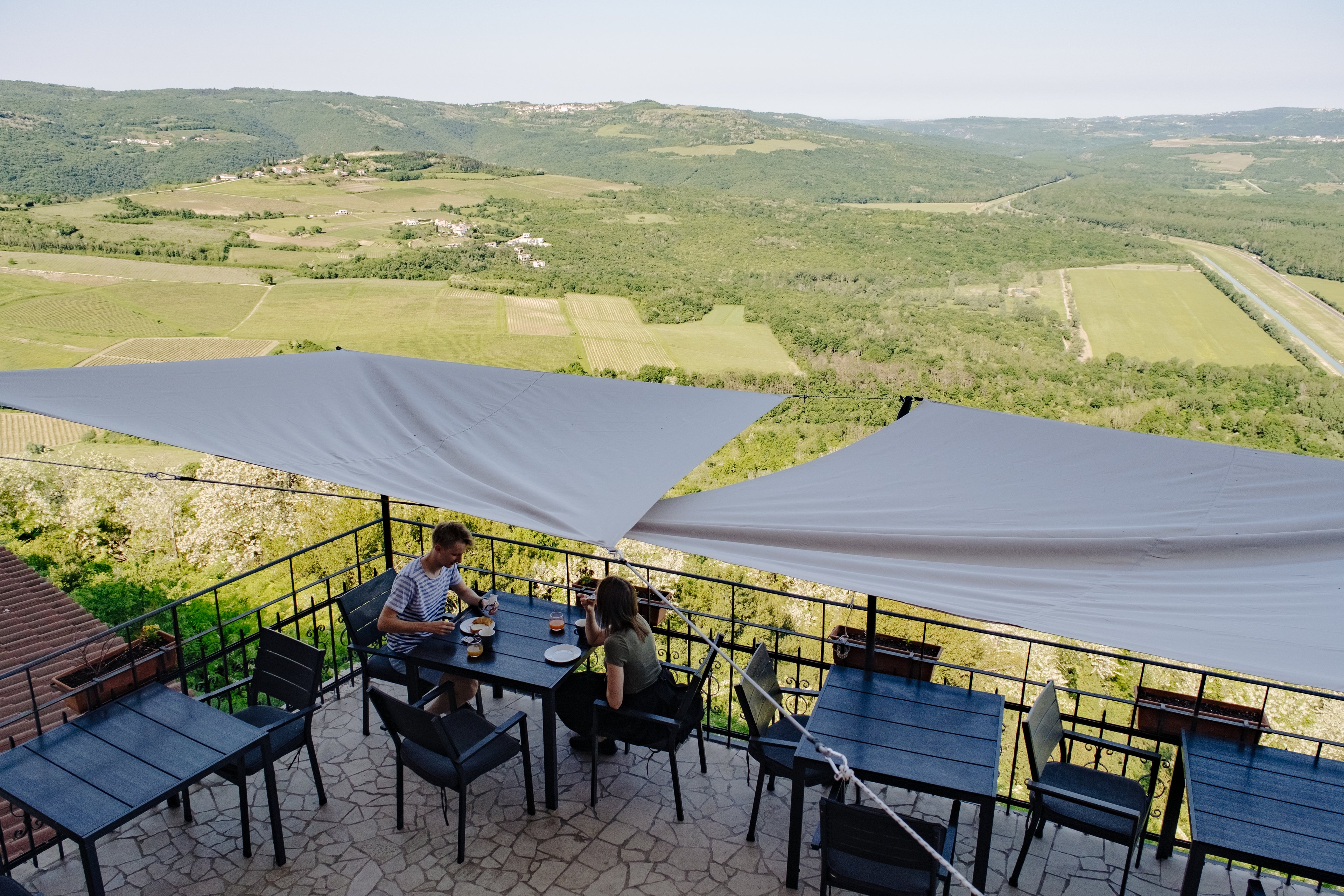
Weather & Temperatures: Cool to pleasantly warm. Daytime highs are typically in the mid-teens to low-twenties °C. Occasional rain showers, especially early in spring.
Trail Conditions: Gravel and soil sections tend to be firm and rideable, though some low parts may be damp or muddy after rain.
Services & Infrastructure: Most hostels, cafés, rental shops, and town services begin opening in late April/May, so early spring may have more limited options.
Crowds & Experience: Relatively quiet, especially in April–May. You’ll have more serenity on the trail.
Why Choose It: Ideal balance of favorable weather + fewer crowds. Landscapes are lush and blooming. Great for photography and immersive riding.
Summer (July – August)
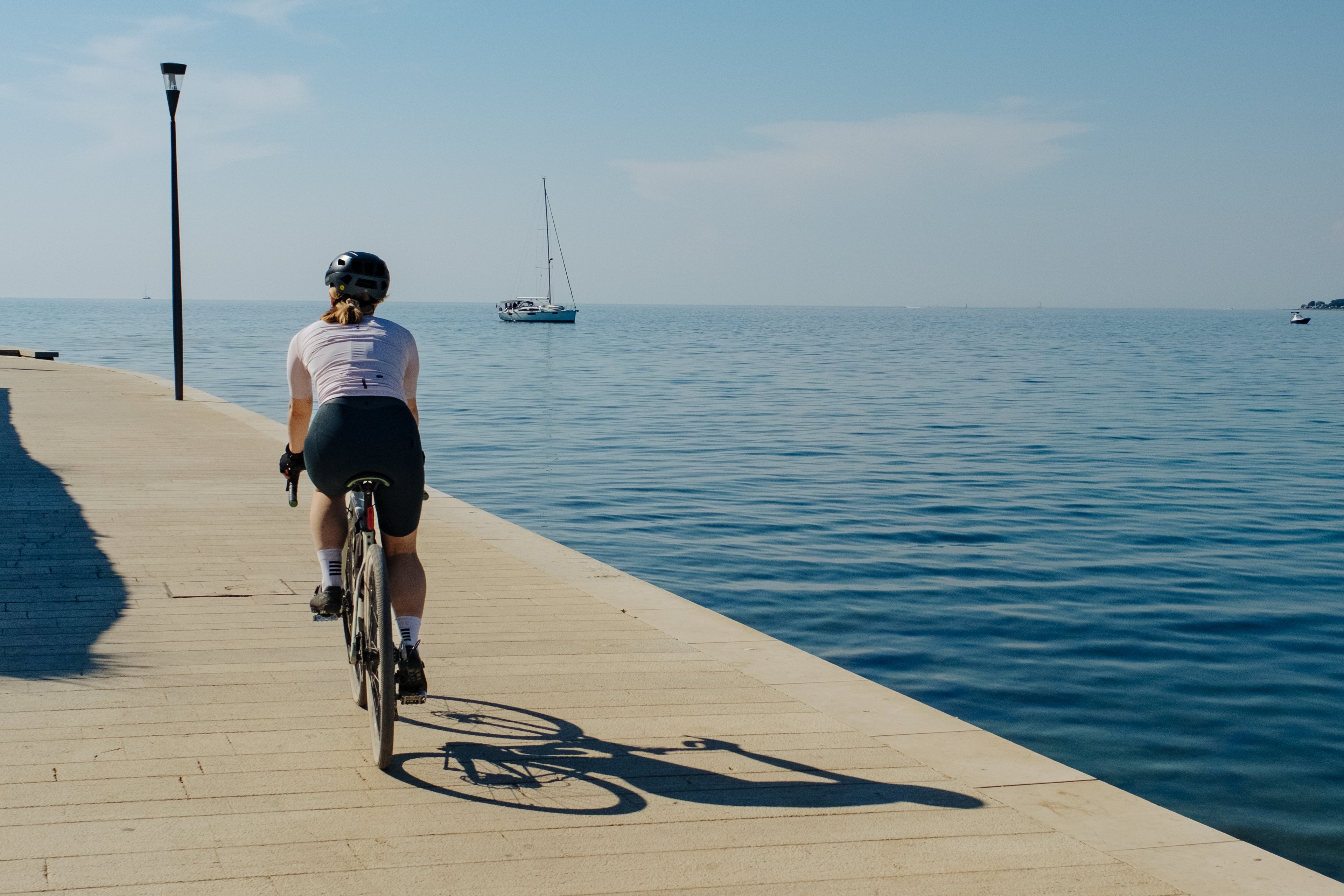
Weather & Temperatures: Warmest period of the year. Coastal stretches and some inland parts can exceed 30 °C, especially in August. Clear skies are common.
Trail Conditions: The dry conditions make gravel and dirt very firm. Dust may be greater. Tunnels and shaded forested stretches become welcome relief.
Services & Infrastructure: Nearly all accommodations, cafés, and bike-services are in full operation. You’ll have widest choice.
Crowds & Experience: Highest footfall. Coastal segments (especially near Koper, Izola, etc.) will see more traffic, day tourists.
Challenges: Heat, especially midday, becomes a factor. Starting early in the morning is recommended. Shade is limited in some exposed sections.
Autumn (September – October)
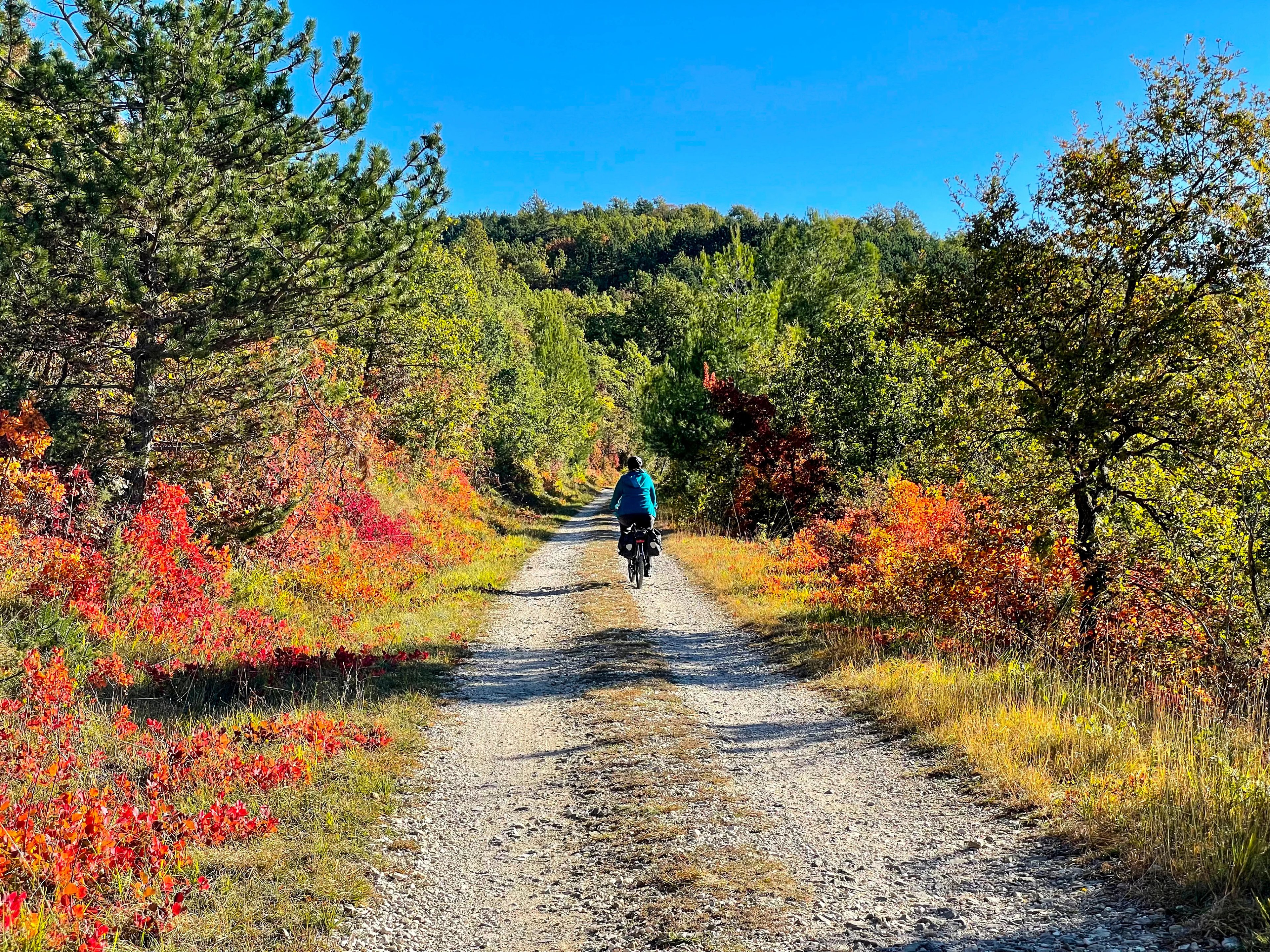
Weather & Temperatures: Mild and comfortable. Daytime temps drop gradually from high 20s to mid-teens. Rain probability increases toward October.
Trail Conditions: Surfaces remain good, but occasional wet patches or loose debris may appear after rain.
Services & Infrastructure: Many places stay open through September; by October, some smaller guesthouses or cafés may scale back hours or close, especially in more rural spots.
Crowds & Experience: Reduced tourism, more quiet days, and a richer local feel. Harvest elements (wine, olives, truffle hunting) make it especially scenic and flavorful.
Why Choose It: A favorite window for many: excellent weather, vibrant colors, and atmospheric experiences. Great for slower, reflective riding.
Winter (November – March)
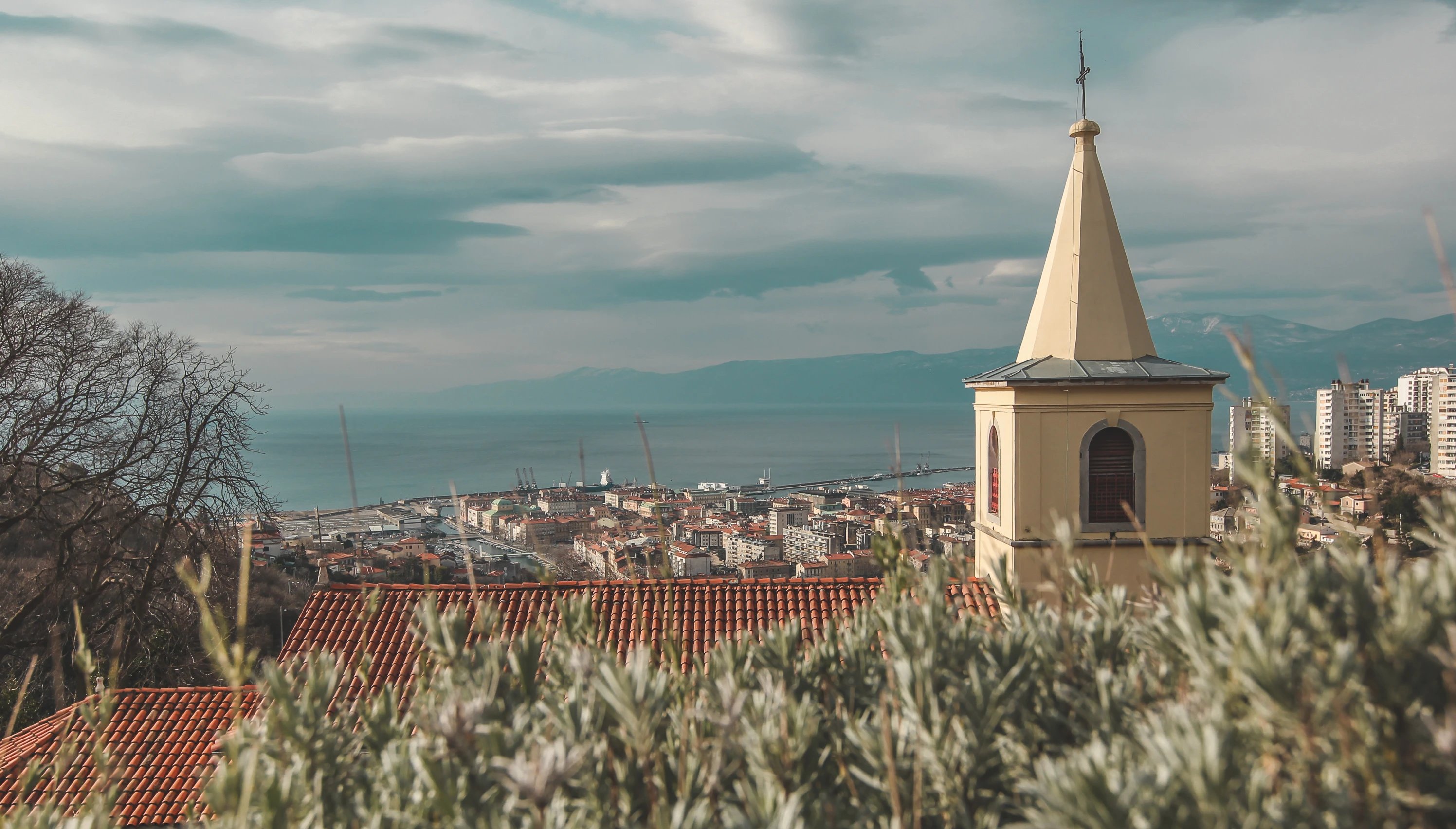
The Parenzana is not suitable for cycling in winter.
Weather & Temperatures: Cool, wetter, more variability. Frost, fog, or occasional snow in higher parts are possible (especially inland).
Trail Conditions: Some segments may become muddy or slippery. Maintenance may be reduced.
Services & Infrastructure: Many guesthouses, cafés, and bike-rental shops close or offer limited hours in off-season. Crowds & Experience: Very quiet, often empty trails, risk of closures or unpredictable conditions rises.
Highlights Along the Parenzana Trail
Cycling the Parenzana trail isn’t just about the ride — it’s about everything you discover along the way.
The route connects Italy, Slovenia, and Croatia, linking cultures, cuisines, and histories that have blended here for centuries.
Here are some of the highlights you’ll experience along the Parenzana — the sights and moments that make this route one of the most unforgettable in all of Istria cycling and cycling Croatia.
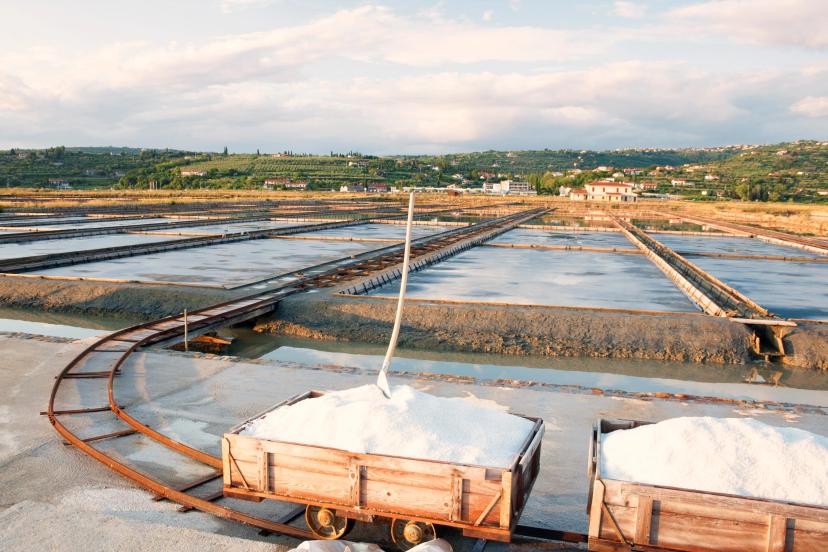
Sečovlje Saltpans
The Sečovlje Saltpans are one of the last places in the Mediterranean where salt is still harvested using centuries-old techniques. Covering about 750 hectares, the saltpans are divided into evaporation basins that double as habitats for hundreds of bird species. A salt museum explains the unique process, and visitors can even try salt-based spa treatments nearby.

Motovun
Just a short ride away, Motovun rises dramatically above the Mirna River valley and is famed for its intact medieval walls and sweeping views across central Istria. The town is at the heart of Croatia’s truffle region, offering everything from simple truffle tastings to fine dining. Its cobbled streets, Venetian architecture, and surrounding forests make Motovun both a culinary hotspot and one of the most atmospheric hill towns in the region.
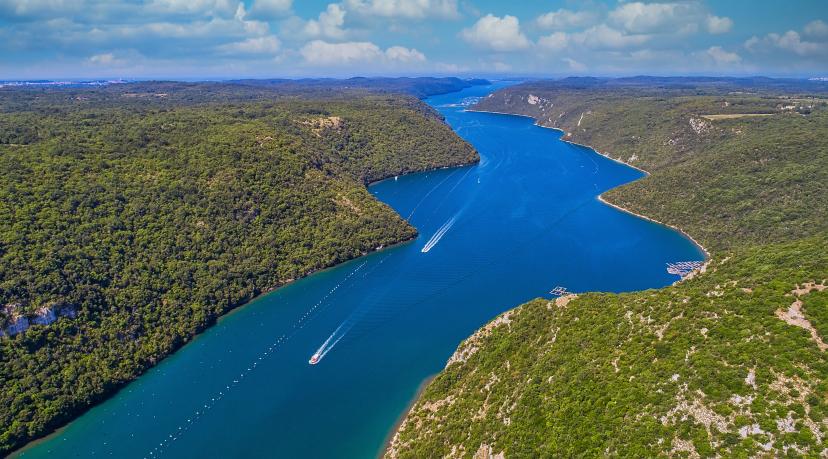
Lim Fjord
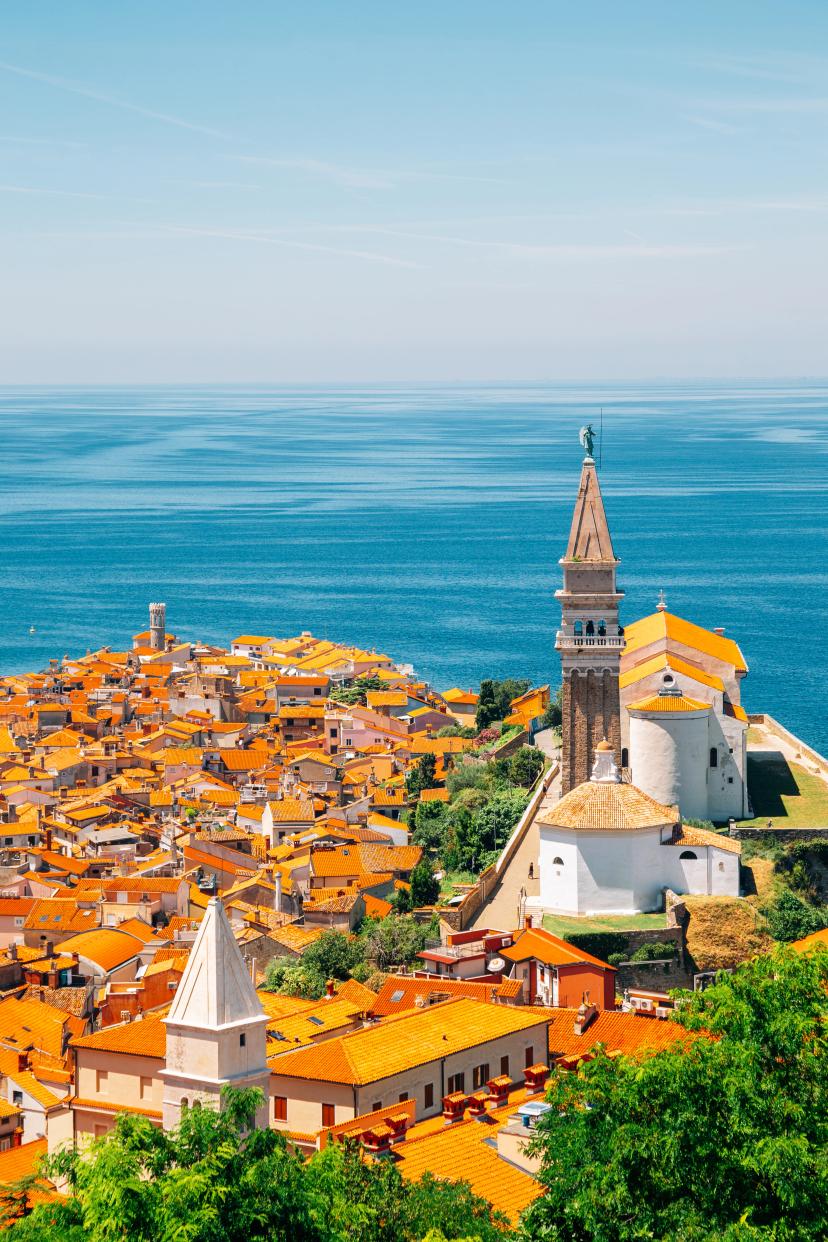
Piran
Piran is a coastal gem on the Adriatic, known for its Venetian heritage and narrow medieval streets. The main square, Tartini Square, is named after the famous violinist Giuseppe Tartini, who was born here. Climb the old city walls for panoramic views of the red-roofed town and the sea, or visit St. George’s Church, which overlooks the harbor from a bluff.
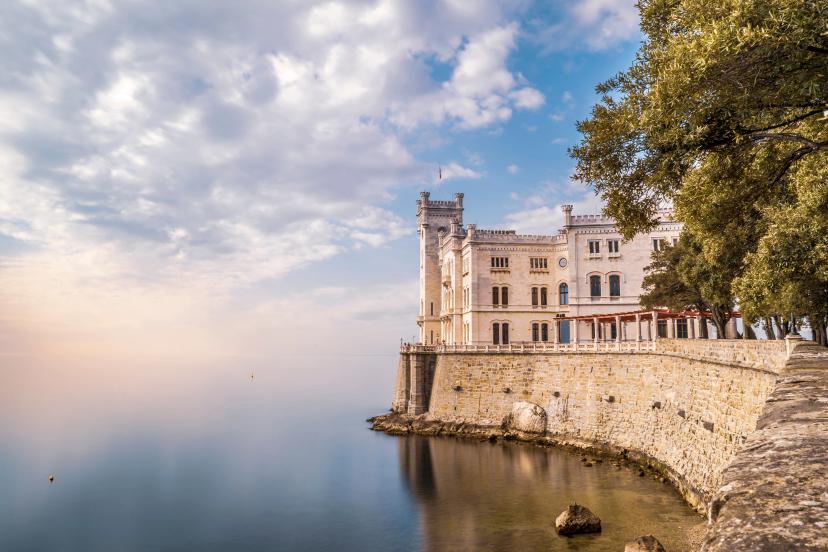
Miramare Castle
Perched above the Gulf of Trieste, Miramare Castle is a 19th-century neo-Gothic residence built for Archduke Ferdinand Maximilian of Austria and his wife Charlotte. The castle’s white stone façade contrasts strikingly with the deep blue sea below, while its lush gardens brim with exotic plants collected from around the world. Inside, lavishly preserved rooms tell the story of imperial elegance and tragic destiny. It remains one of Italy’s most graceful seaside palaces.
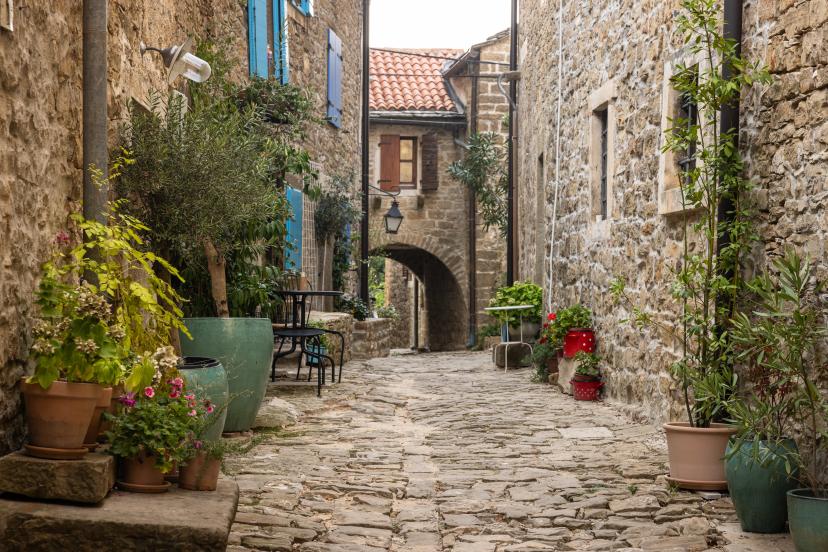
Grožnjan
Perched on a hilltop in Croatia’s Istrian peninsula, Grožnjan is renowned as the “town of artists.” Its medieval stone lanes are packed with more than twenty galleries and studios, and music festivals fill the narrow streets each summer. With panoramic views over vineyards and olive groves, Grožnjan blends history, art, and a relaxed Mediterranean charm that makes it a favorite stop for culture lovers and cyclists crossing the border from Slovenia.
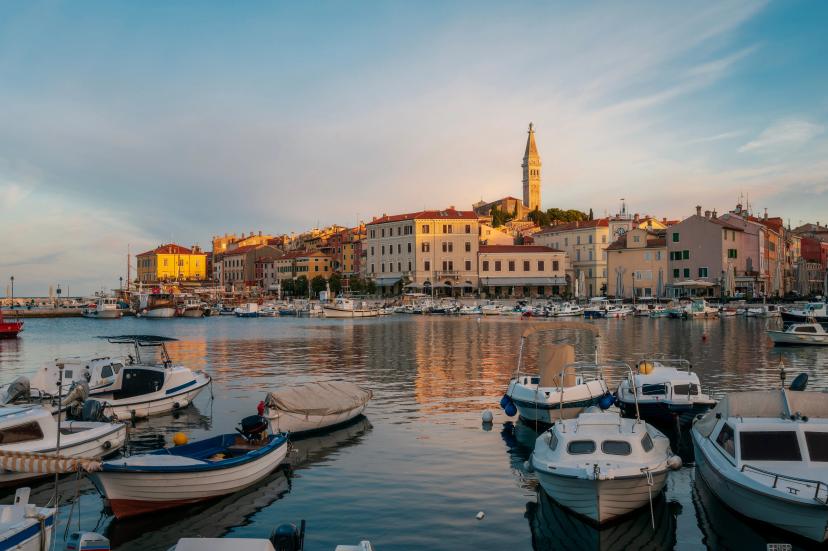
Rovinj Old Town
Rovinj is a picturesque Istrian town built on a small peninsula jutting into the Adriatic. Its narrow, cobbled lanes climb toward the Church of St. Euphemia, whose tall bell tower offers sweeping views. The waterfront is lined with pastel houses, cafés, and fishing boats. Once an island itself, Rovinj merged with the mainland over centuries but retains an intimate, coastal charm.
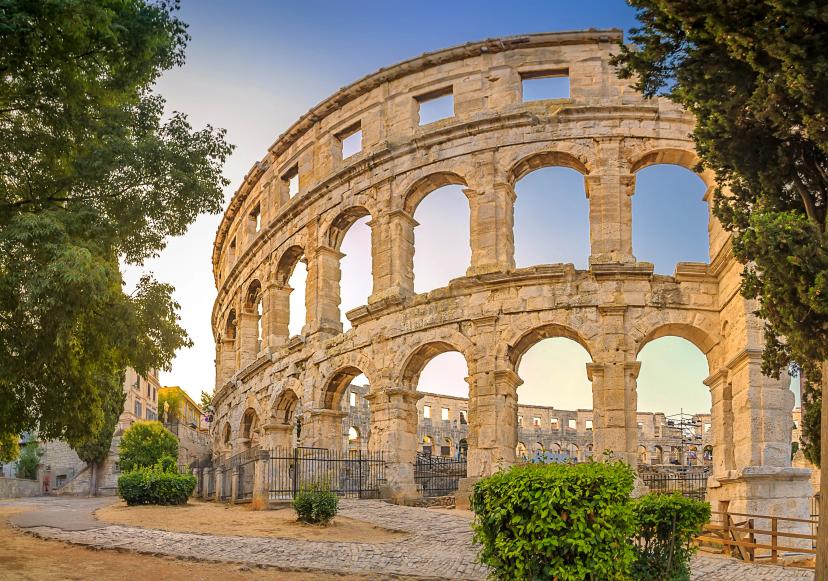
Arena Pula
The Pula Arena is one of the best-preserved Roman amphitheaters in the world. Built in the 1st century AD under Emperor Vespasian—the same emperor who commissioned the Colosseum in Rome—it could once seat 23,000 spectators. Today, it hosts concerts, film festivals, and cultural events, making it a remarkable blend of ancient history and modern life in the heart of Pula.
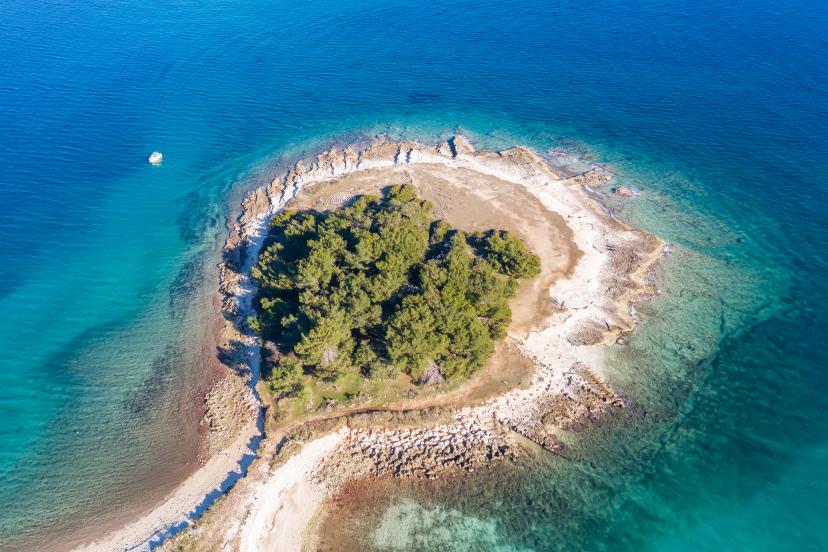
Premantura
Premantura is the southernmost tip of the Istrian peninsula, known for the protected landscape of Cape Kamenjak. The cape is dotted with coves, cliffs, and beaches, and its coastline stretches for about 30 kilometers. Cyclists and hikers can explore its trails, while swimmers and divers are drawn to its clear waters and unique rock formations.
Getting To/From There
The Parenzana bike route begins in Trieste, Italy, and ends in Poreč, Croatia—two coastal towns that are well connected by air, road, and sea. For international cyclists, both serve as ideal gateways into Istria, making travel to and from the route smooth and accessible.
Getting to the Start — Trieste
By Air
The most convenient airport for international visitors is Trieste–Friuli Venezia Giulia Airport (TRS), located about 33 km from the city center. It has regular connections with major European hubs such as Munich, Frankfurt, London, and Rome.
From the airport, reaching the city center is straightforward:
- Train: The airport has its own on-site train station, directly connected to the Italian railway network. Trains to Trieste Centrale run every 30–60 minutes, taking about 30 minutes.
- Bus: Buses connects the airport to Trieste’s main bus station (Piazza della Libertà) in roughly 55 minutes. They depart several times daily, and most services allow standard luggage and folding bikes.
- Private Transfer: For the easiest start — especially when traveling with boxed or assembled bikes — a private or pre-booked transfer is the most convenient option.
If you’re arriving from farther abroad, you can also choose to fly into:
- Venice Marco Polo Airport (VCE) – 2.5 hours by train or transfer to Trieste
- Ljubljana Jože Pučnik Airport (LJU) – about 2 hours by road
- Pula Airport (PUY) – 2.5 to 3 hours away, convenient if starting or finishing further south in Istria

Returning from the Finish — Poreč
Finishing your ride in Poreč is a fitting reward after cycling the length of the Parenzana trail. This lively coastal town is well connected to the rest of Istria and nearby international gateways, making onward travel smooth — especially if you plan ahead or join an organized tour.
By Air
The closest airport to Poreč is Pula Airport (PUY), located about 60 km south. It has regular seasonal flights to major European hubs such as London, Frankfurt, Munich, and Amsterdam, which makes it convenient for connecting flights home.
Other airports commonly used after finishing the Parenzana, especially if you are combining your cycling holiday with further exploration of the wider Adriatic area, include:
- Trieste Airport (TRS) – around 2 hours by road, suitable for those continuing north or flying back via Italy
- Ljubljana Airport (LJU) – around 2.5 hours, offering year-round connections across Europe
- Venice Marco Polo Airport (VCE) – about 3.5 hours, ideal for long-haul flights to the U.S. and beyond
Private transfers and shared shuttles are available between Poreč and all of these airports. Many accept bike boxes or assembled bicycles if arranged in advance.
For more detailed information on everything you need to know when visiting Croatia, see our travel tips & info for Croatia.
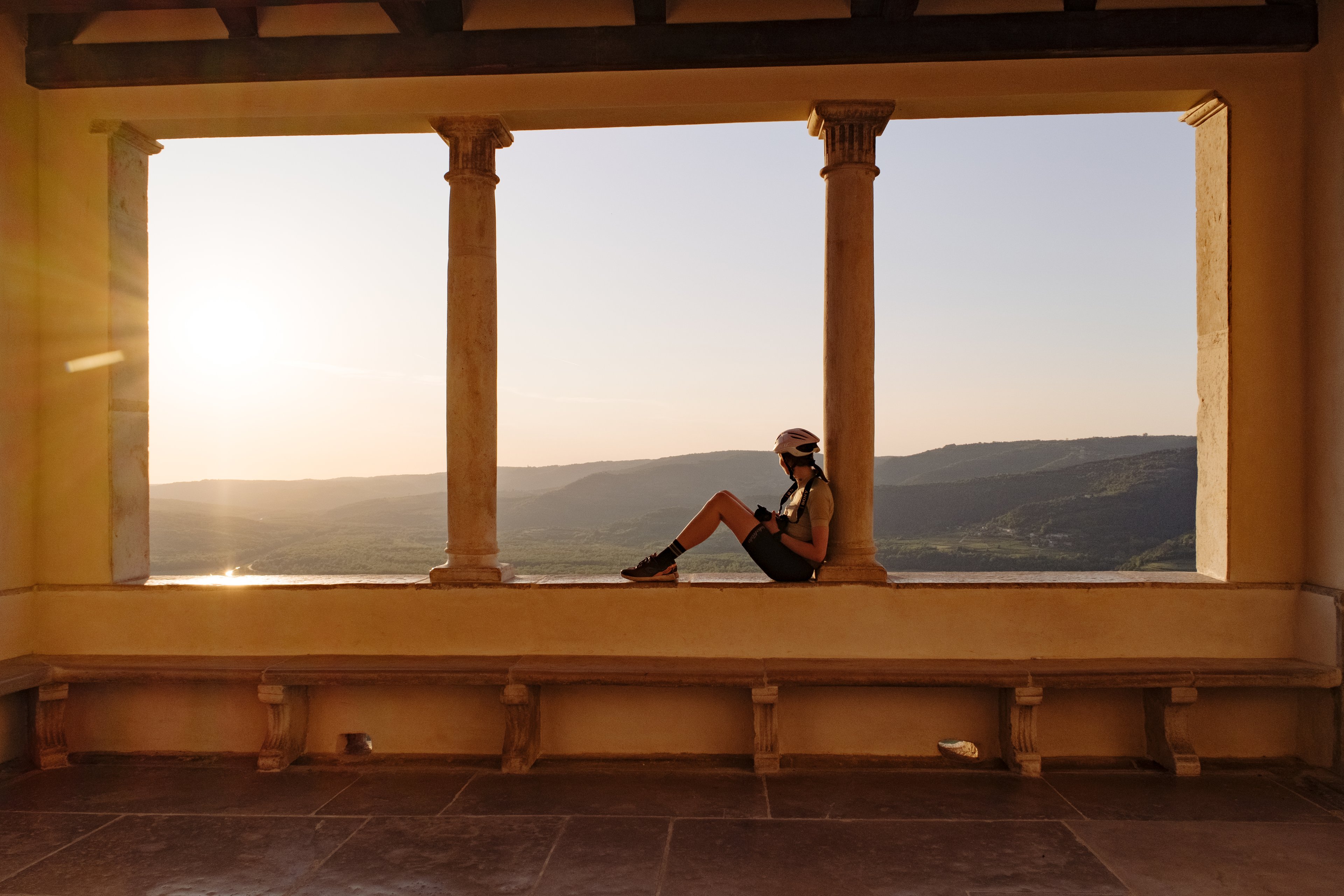
Ready to Ride the Parenzana?
The Parenzana bike route captures the very best of Istria cycling.
With our Best of Istria Cycling Tour, you’ll enjoy a stress-free planning experience and a seamless ride from start to finish. We’ll take care of everything — GPS trails, handpicked accommodations, luggage transfers, and airport pickups — so you can simply focus on the joy of riding.

Hassle-Free
We handle itineraries, accommodations, and anything else you prefer not to deal with, so you can enjoy carefree cycling holidays.

Handpicked Adventures
Only the best bike tours in Croatia, cherry-picked by our team with an in-depth knowledge of the region.

Trusted by Many
Since 2014, we have taken care of thousands of happy customers, making it our mission to put your satisfaction first.

Value Your Time
With everything on your plate, let us handle the vacation planning, so your valuable time stays exactly where you need it.

Unbeatable Support
Our round-the-clock customer support is where we show our passion, bringing you a better experience by making your well-being our number one priority.

.jpg&w=3840&q=75)
